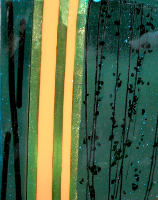Tiferet (Tiphareth) – The Balancing Sephirah
Tiferet תפארת, also spelled Tipheret, Tiphareth, – Splendor, Beauty, Truth
Central balancing Sephirah of the Kabbalistic Tree of Life. Pronunced Tif’ereth.
Between Heaven and Earth
As the central Sefirah of the Tree of Life, every Sefirah except Malkhut flows into Tiferet1. Its harmonious blending of all the Sefirot is beautiful2. Tiphareth is the midway point between heaven and earth, on the line extending between Keter and Malkhut1 (Keter is rooted in the divine nature of the Creator, while Malkhut is the Sefirah which brings forth the physical world below it).
Balance Between Opposites
Tiferet is located on the middle pillar of the tree, characterized by balance between opposites. It synthesizes between Hesed on the right pillar, which represents complete kindness, outpouring, and expansion – and Gevurah on the left pillar, representing judgment and restriction. On the physical level, we can see this reflected in how a person must balance compassion with discipline, with lack of either creating imbalance and failure.
Optimally, Tiphareth leans a little toward Chesed, and so it is also called Rahamim, Mercy, Compassion3.
Forget Compromise! The Way to Reconcile What Can’t Be Reconciled
 Hesed (Chesed) Kindness and Gevurah Judgment are complete opposites. So how do they come together? It is not simply a matter of a compromise between the two, but Tiferet is an entire third principle that is able to blend and balance the two opposites.
Hesed (Chesed) Kindness and Gevurah Judgment are complete opposites. So how do they come together? It is not simply a matter of a compromise between the two, but Tiferet is an entire third principle that is able to blend and balance the two opposites.
A way to consider this principle would be to think of two opposite colors – black, and white. If we simply compromise by mixing them half and half– the result is homogenous gray – dull artwork indeed. However, a skilled artist can use both black and white together to create form and figure, with black lines, white background, highlights and shadows to create a masterpiece that goes beyond mere black and white. The integrity of both colors remains – black is not asked to be white, nor white asked to be black. Without either, the full picture could not remain.
Learning from the Middle Path
 As one of the Ten Sefirot, Tiferet exists on a very high spiritual level that is beyond most of our comprehension (unless any of us have managed to become prophets, which I certainly haven’t). However, there are still beautiful ways we can begin to integrate this concept of the Middle Pillar into our lives.
As one of the Ten Sefirot, Tiferet exists on a very high spiritual level that is beyond most of our comprehension (unless any of us have managed to become prophets, which I certainly haven’t). However, there are still beautiful ways we can begin to integrate this concept of the Middle Pillar into our lives.
One example provided by my kabbalah teacher, is the concept of Equanimity. This means accepting everything that comes to us in life, whether it appears good or bad, realizing that it is a learning experience, teaching us what we need to learn in this life. The Talmud speaks of the Torah Sage Nachum Ish Gamzu who would always say “גם זו לטובה ” “This too is for the good.”
Equanimity also teaches us to Respond, not React, to remain centered and balanced in the world of changes and conflicts. As any celebrity knows, one day the world may applaud you, and the next day it may insult you. It can be easy to lose yourself in the drama, but if you know who you are and what you have come here to create, you don’t let it sway you. Whatever, you hear from the right or the left, you stay centered on your goal.
Correspondence of Tiphareth to the Human Body
The Sefirah of Tiferet corresponds to the torso of the human body, and particularly to the heart. And an interesting fact which my kabbalah teacher has often brought up is that in the Torah when people think, it does not say that they do so with the brain, but rather with the heart. This does not mean being ruled by the emotions, but rather something about the intelligence of the heart to reconcile all the opposites in life of thoughts, feelings, experiences, etc. When was the last time you let your heart do the thinking?
Practice
Here is excellent practical exercise that my kabbalah teacher suggests to learn to balance the opposites, solving all the conflicts. It is called The Helicopter and the Boat, taken from his book, The Bodyspeak Manual, p. 53.
“The View from the Helicopter and the Boat”
Exercise: In any situation in life, imagine that you are seeing yourself from far above, from the “helicopter view,” where you can get the bigger picture and see how small your situation and worries are. Observe yourself, and your situation objectively. Then return to the “boat view,” to seeing from your own personal perspective, where you can act and make decisions based on what you have seen from the helicopter.
Benefits: Be able to integrate the whole with the details, the larger picture with the smaller picture. Make faster decisions. Learn to observe yourself and correct your mistakes.
Tiferet in Kabbalistic Writings
In certain kabbalistic texts, the word Tiferet is also used to refer to the six Sefirot: Chesed, Gevurah, Tifereth, Hod, Netzach, Yesod.
Explore Tiphareth at Kabbalah Glass

Beautiful Tipheret Artwork by Helen from KabbalahGlass.com
To learn more about Tipheret, I recommend the beautiful writing and artwork at the Kabbalah Glass website, written by my friend Helen. She writes: “Tipheret is the point of balance between chesed (loving-kindness) and gevurah (restraint). It is about the joy that comes from both working in balance. Tipheret’s about choosing what is best for the whole, not only for yourself or another. Tipheret is about compassion, beauty, and mercy. It energizes creativity.” Read more about Tipheret at Kabbalah Glass.





Great content, very helpful, and that you quote Tomer Devorah gives me grounding in Emes.
Bracha and Hatzlocha to you.
Milt Simon